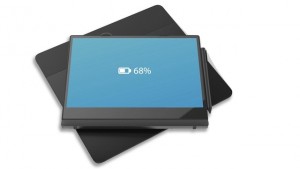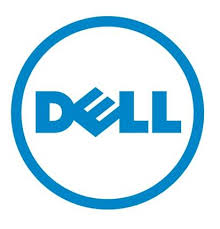 Unlike the wireless charging systems such as the QI standard that are trying to get a foothold in the smartphone market, Dell’s newest device uses the WiTricity magnetic-resonance system instead. That means that as well as safely and quickly delivering the extra juice needed to recharge the bigger battery cell in a computer, this system can do so from distance. A smartphone that can be recharged wirelessly needs to be placed very carefully on a wireless charging pad to function. However, this Dell device should start charging immediately as long as it’s within the vicinity of the pad. Magnetic resonance-based systems are able to make a wireless connection with a device through other materials. So an entire desk in an office, or counter in a person’s kitchen could be turned into a power source that’s safe to touch and that can charge up potentially anything from a notebook to a Kenwood Chef, no matter where on the surface it’s placed. “WiTricity’s wireless charging technology makes it possible to integrate magnetic resonance in today’s thin, iconic computing products,” said Neil Hand, Dell’s VP Product Strategy and Innovation. “We are committed to driving innovation that brings revolutionary gains in productivity.” Dell started investigating the feasibility of wireless charging in 2014, but in recent months it has been supercharging its efforts to bring a device to market. At Computex in Taipei last June, the company showcased a prototype notebook with wireless resonance charging and six months later it is a reality. However, for the moment at least, Dell and WiTricity are focused on using the technology to revolutionize the workplace, rather than the home. “This collaboration between Dell and WiTricity is making the wireless workplace a reality for customers around the globe,” said Alex Gruzen, CEO, WiTricity. “The Dell Latitude 7285 not only enables a more productive working environment, but accelerates establishment of a broader magnetic resonance-powered wireless charging ecosystem for a wide range of devices.”
Unlike the wireless charging systems such as the QI standard that are trying to get a foothold in the smartphone market, Dell’s newest device uses the WiTricity magnetic-resonance system instead. That means that as well as safely and quickly delivering the extra juice needed to recharge the bigger battery cell in a computer, this system can do so from distance. A smartphone that can be recharged wirelessly needs to be placed very carefully on a wireless charging pad to function. However, this Dell device should start charging immediately as long as it’s within the vicinity of the pad. Magnetic resonance-based systems are able to make a wireless connection with a device through other materials. So an entire desk in an office, or counter in a person’s kitchen could be turned into a power source that’s safe to touch and that can charge up potentially anything from a notebook to a Kenwood Chef, no matter where on the surface it’s placed. “WiTricity’s wireless charging technology makes it possible to integrate magnetic resonance in today’s thin, iconic computing products,” said Neil Hand, Dell’s VP Product Strategy and Innovation. “We are committed to driving innovation that brings revolutionary gains in productivity.” Dell started investigating the feasibility of wireless charging in 2014, but in recent months it has been supercharging its efforts to bring a device to market. At Computex in Taipei last June, the company showcased a prototype notebook with wireless resonance charging and six months later it is a reality. However, for the moment at least, Dell and WiTricity are focused on using the technology to revolutionize the workplace, rather than the home. “This collaboration between Dell and WiTricity is making the wireless workplace a reality for customers around the globe,” said Alex Gruzen, CEO, WiTricity. “The Dell Latitude 7285 not only enables a more productive working environment, but accelerates establishment of a broader magnetic resonance-powered wireless charging ecosystem for a wide range of devices.”
1 min read
Dell’s Latitude 7285 is the world’s first wireless charging laptop


